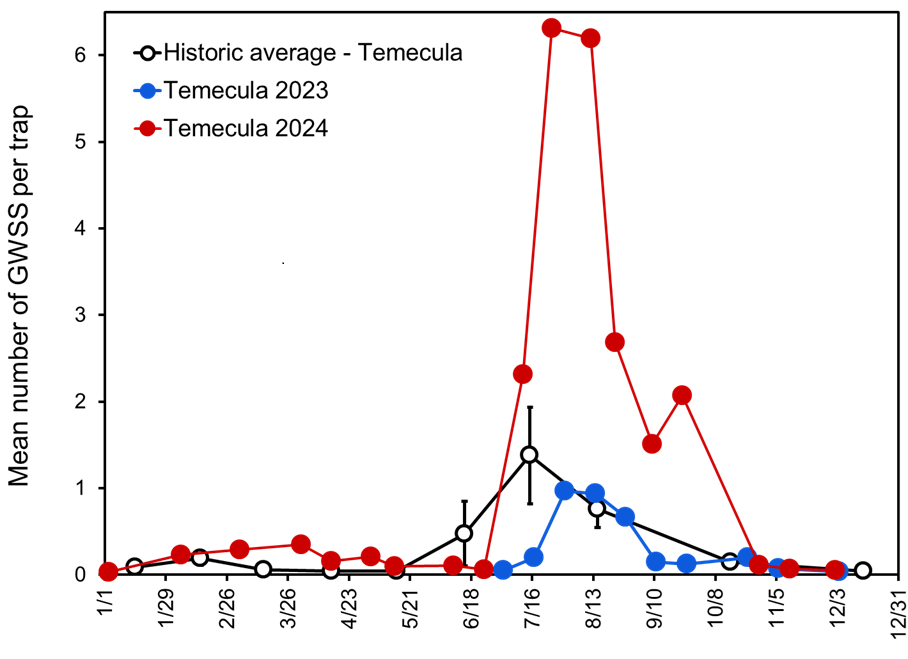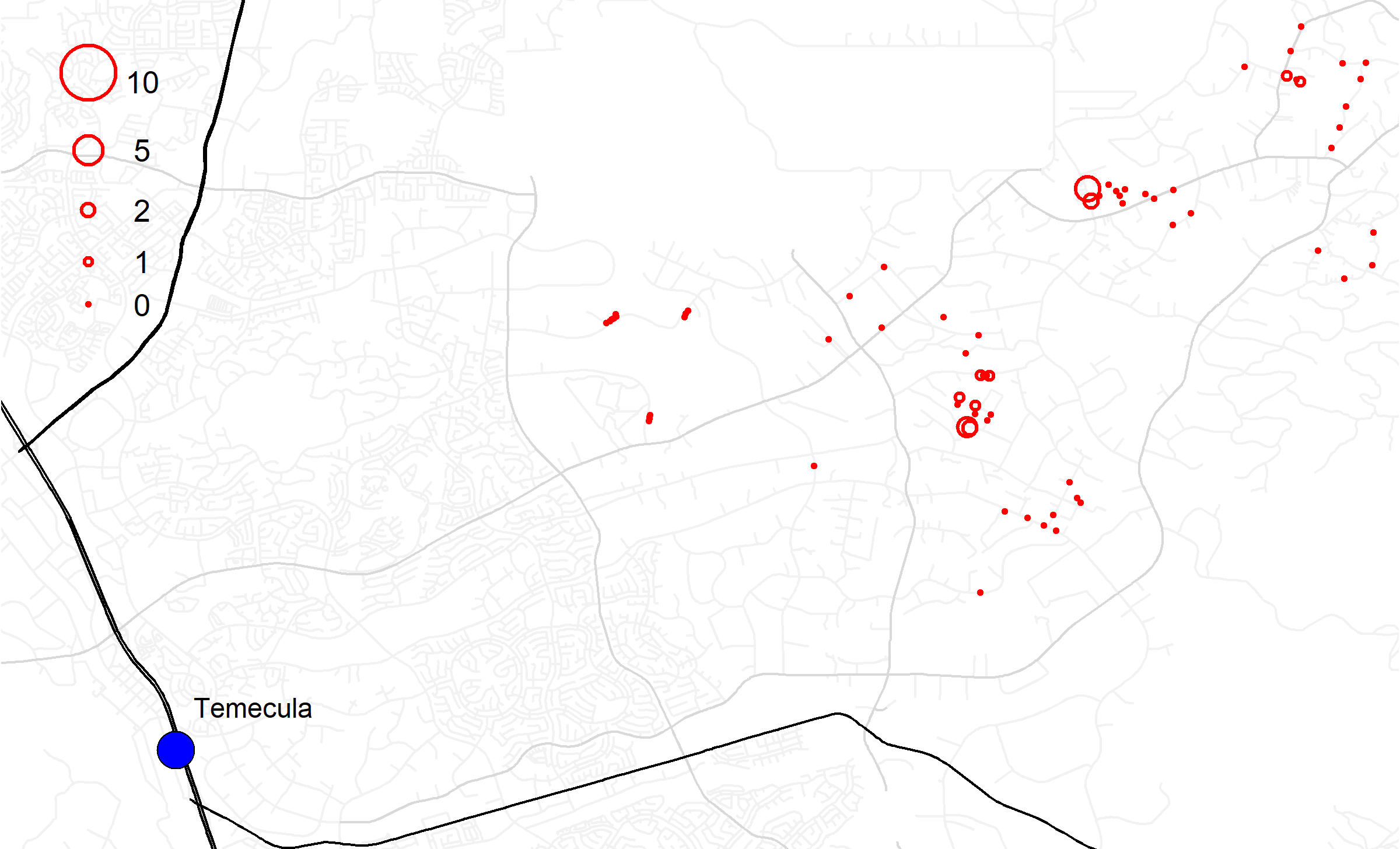Belated happy New Year. Since the last post there have been three rounds of GWSS trapping. The results show sharp declines in the number of GWSS captures, which is typical for this time of year.
A total of just 17 GWSS were collected among the 213 total traps recovered over the three censuses (issues with access or traps blowing down are common this time of year). As you can see in the map below, only a few traps collected multiple GWSS over the last few months.
Reviewing GWSS activity over the whole year, 2024 started with higher than usual counts through the Spring. That led to among the biggest peaks in GWSS over the Summer that we've seen since the areawide monitoring program started approximately 20 years ago. At least part of that peak is likely attributable to the usually high temperatures over the Summer and early Fall. Nonetheless, fortunately, GWSS activity shut down to typical low levels through the end of the year.
Because GWSS must acquire the pathogen from infected plants to spread Pierce's disease, one bad vector year like this is unlikely to cause significant problems. However, multiple years of high vector populations would be problematic. In the coming months it will be worth keeping an eye on GWSS counts to see whether there is another early-season indicator of what GWSS activity might be like later in the year.
Please contact Matt (mattd@ucr.edu; 951-255-2807) for more information

